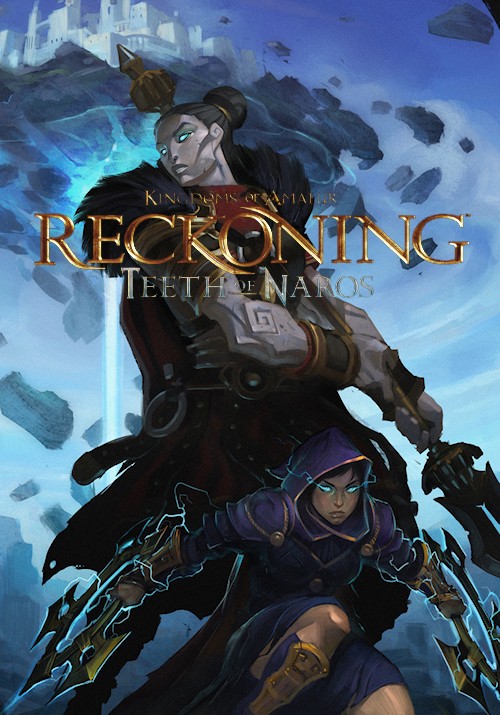Kingdoms of Amalur: Reckoning - Teeth of Naros Review
-
Category: ReviewsHits: 37921

Article Index
Page 1 of 2
Time flies. It seems like it was just last month that I was playing Kingdoms of Amalur: Reckoning for review, and just last week that I took a look at its first full-sized add-on, "The Legend of Dead Kel." Big Huge Games and 38 Studios seem to be putting these DLCs out with surprising regularity and speed, and while that might be cause for concern, "Dead Kel" was a very solid addition with a few new game mechanics and some surprisingly varied level design behind it. In other words, things were looking promising for the newest add-on, "Teeth of Naros" as well. Unfortunately, that promising start with "Dead Kel" hasn't been something that "Teeth of Naros" has been able to follow through on. Although the quantity of much of the content is more than acceptable, and 38 Studios pulled out all the stops in building a beautiful world to explore, the quality of the gameplay has abandoned many of the positive strides forward made by "Dead Kel".
From Legend and Myth
"Teeth of Naros" gets off to a slightly sloppy start with one of the worst cases of gameplay and story segregation I've seen in a very long time. Enlisting in an expedition to find a rumored lost, floating city in the unexplored southern regions of the Faelands, the "inhospitable terrain" and "weeks-long journey" amount to what is effectively a ten-minute cave dungeon. One by one, the paltry three members of the expedition are picked off in almost unbelievably silly ways (seriously, can nobody but the player character carry a health potion?), and before long it's just the Fateless One left to reach the end.
After this slow and awkward beginning, things begin to look up as daylight shines down and the world opens up once more - "Teeth of Naros" certainly does bring a new world ripe for exploration and questing. Thematically, the Teeth of Naros and its floating city of Idylla are based heavily on ancient Greece, both in the architecture and much of the culture. There's a lot of it to go around, and I have to wonder just how on earth 38 Studios are able to build such a huge world in such short order.
The entire region is home to a new race of people. The Kollossae are towering, fifteen-foot-tall living statues, and their culture has a strong streak of vanity running straight through it, a vanity that predictably is their downfall. Unfortunately, the Kollossae feel a bit strange next to the rest of Amalur. Whereas the original game had a generic fantasy base with a twist of Irish folklore, the Kollossae feel like they're inspired by Disney's Hercules film more than anything else. They're cartoonish and poorly fleshed out compared to some of Amalur's other races (not that that's an extremely high bar), and I had a hard time taking them seriously. What could have been an interesting addition to the world of Amalur instead feels arbitrary and more like a gimmick than anything else.
Story-wise, "Teeth of Naros" hits all the standard beats, but because of this, it's also extremely tame and predictable. Centering around the Kollossae and their attempts to appease their silent gods, the decent setup doesn't really go anywhere interesting. The plot twists are extremely obvious and uninvolving, and there's a lengthy section at the beginning of the story which involves the culling of some Jottun, which as far as I can tell exists solely to fill up an hour of time. There's even a magical artifact with ill-defined powers which seem to change to whatever the plot needs them to be at a given moment, which I'm surprised wasn't just called Applied Phlebotinum. Granted, Amalur's own storyline wasn't the greatest thing ever, but compared to "The Legend of Dead Kel" a month ago, "Teeth of Naros" is under-developed and lacks any of the gravity it seems to think it has.
Treading Water
On a purely technical and aesthetic, "Teeth of Naros" is actually a step above both the base game and "The Legend of Dead Kel". In fact, I would say that 38 Studios have produced their most stunning environments yet, and while it's not exactly The Witcher 2, I've always thought the world of Amalur came across as a lush and vivid place, and "Teeth of Naros" raises the bar in this respect. Likewise, the move away from distinct "zones" into a more open, ring-shaped world makes everything feel a little bit more open and free to explore, and also gives a greater consistency and realism to the game world, with more natural transitions between different locations.


